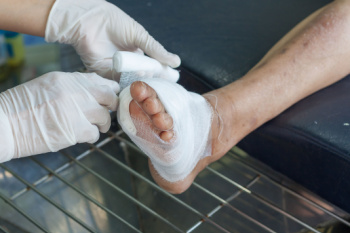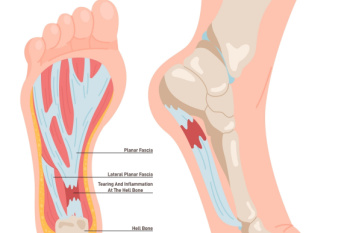
Diabetic foot care is imperative for individuals with a high-risk diabetic foot, as they are more prone to complications like ulcers, infections, and amputations. High-risk factors include neuropathy, poor circulation, and a history of foot ulcers. Daily foot inspections are essential to spot cuts, blisters, or color changes early. Proper hygiene, including washing and thoroughly drying feet, helps prevent infections. Moisturize dry skin, but avoid areas between the toes to reduce fungal growth. Always wear properly fitting shoes and padded socks to avoid pressure points. Regular podiatric visits can help monitor foot health and manage issues before they worsen. Blood sugar control is vital, as elevated levels impair healing and increase infection risks. If you are at high risk for diabetic foot problems, it is suggested that you maintain vigilance and follow a tailored care plan prescribed by a podiatrist to reduce complications and preserve foot health.
Diabetic foot care is important in preventing foot ailments such as ulcers. If you are suffering from diabetes or have any other concerns about your feet, contact one of our podiatrists from Greater Boston Foot Care, PLLC. Our doctors can provide the care you need to keep you pain-free and on your feet.
Diabetic Foot Care
Diabetes affects millions of people every year. The condition can damage blood vessels in many parts of the body, especially the feet. Because of this, taking care of your feet is essential if you have diabetes, and having a podiatrist help monitor your foot health is highly recommended.
The Importance of Caring for Your Feet
- Routinely inspect your feet for bruises or sores.
- Wear socks that fit your feet comfortably.
- Wear comfortable shoes that provide adequate support.
Patients with diabetes should have their doctor monitor their blood levels, as blood sugar levels play such a huge role in diabetic care. Monitoring these levels on a regular basis is highly advised.
It is always best to inform your healthcare professional of any concerns you may have regarding your feet, especially for diabetic patients. Early treatment and routine foot examinations are keys to maintaining proper health, especially because severe complications can arise if proper treatment is not applied.
If you have any questions please feel free to contact our office located in Plymouth, MA . We offer the newest diagnostic and treatment technologies for all your foot and ankle needs.




